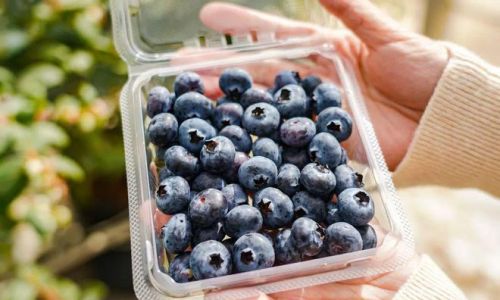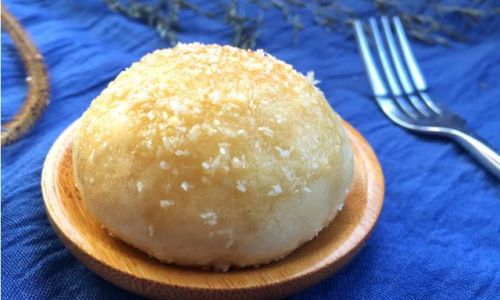Introduction
Blueberries, known for their vibrant color, sweet-tart flavor, and impressive nutritional profile, are a staple in many diets worldwide. Rich in antioxidants, vitamins, and minerals, these tiny berries offer a myriad of health benefits, from enhancing brain function to supporting heart health. However, like many fruits, fresh blueberries have a limited shelf life, which can be a challenge for those who enjoy them regularly or buy in bulk. Proper preservation techniques can significantly extend the freshness and usability of blueberries, ensuring you can enjoy their delightful taste and nutritional benefits for longer. This comprehensive guide will explore various methods for preserving fresh blueberries, focusing on maintaining their quality, taste, and nutritional integrity.
Understanding Blueberry Shelf Life
Before diving into preservation techniques, it’s crucial to understand the natural shelf life of fresh blueberries. Freshly picked blueberries typically have a shelf life of about one to two weeks when stored properly in the refrigerator. This timeframe can vary depending on factors such as the ripeness of the berries at harvest, storage conditions, and the variety of blueberry.
When purchasing blueberries, look for firm, plump berries with a deep, consistent blue color (or red, if you’re buying a red variety). Avoid berries that are soft, wrinkled, or have mold spots, as these are signs of spoilage. Once you bring them home, store them in the refrigerator in their original container or a breathable container lined with paper towels to absorb excess moisture.

Refrigeration: The Basic Preservation Method
Refrigeration is the simplest and most commonly used method for preserving fresh blueberries. By storing blueberries in the refrigerator, you can slow down the ripening process and extend their shelf life. Here are some tips for effective refrigeration:
-
Proper Storage Container: Use a container with good ventilation, such as a plastic clamshell with holes or a container lined with paper towels. Avoid airtight containers, as they can trap moisture and cause the berries to mold.
-
Single Layer Storage: If possible, store blueberries in a single layer to prevent crushing and to ensure even cooling. If you must stack them, use a layer of paper towels between each layer to absorb moisture.
-
Crisper Drawer: The crisper drawer in your refrigerator is the best place to store blueberries, as it maintains a consistent humidity level and temperature. Avoid storing them on the refrigerator door shelves, where temperature fluctuations can occur.
-
Inspect Regularly: Check your blueberries regularly for signs of mold or spoilage. Remove any moldy berries immediately to prevent the mold from spreading to the others.
Freezing Blueberries: For Long-Term Preservation
For those who want to enjoy blueberries beyond their natural shelf life, freezing is an excellent option. Freezing preserves the berries’ nutritional value and flavor while allowing you to use them throughout the year. Here’s how to freeze blueberries effectively:

-
Rinse and Dry Thoroughly: Before freezing, rinse your blueberries under cold running water and pat them dry using a clean kitchen towel or paper towels. Excess moisture can cause freezer burn and ice crystals, which can degrade the berries’ texture and flavor.
-
Flash Freezing: To prevent blueberries from sticking together in the freezer, you can flash freeze them first. Spread the berries in a single layer on a baking sheet lined with parchment paper and place the sheet in the freezer for about two hours, or until the berries are frozen solid. Once frozen, transfer them to an airtight freezer bag or container.
-
Direct Freezing: If you don’t mind the berries sticking together, you can skip the flash freezing step and freeze them directly in an airtight container or freezer bag. To make it easier to portion out later, you can freeze them in single-serve portions.
-
Label and Date: Always label your frozen blueberries with the date they were frozen. This will help you keep track of their freshness and ensure you use them within a reasonable timeframe. Frozen blueberries can last for up to a year, but their quality and flavor are best within the first six to eight months.
Drying Blueberries: Preserving for Snacking and Cooking
Dried blueberries are a versatile and convenient way to enjoy these berries year-round. They can be used in baking, as a snack, or added to trail mix. Here’s how to dry blueberries at home:
-
Pre-Treatment: Before drying, you can lightly sweeten the blueberries by dipping them in a lemon juice and sugar mixture (optional). This will enhance their flavor and help preserve their color.

-
Dehydrator or Oven: Use a food dehydrator or your oven’s lowest setting to dry the berries. Spread them in a single layer on dehydrator trays or oven racks lined with parchment paper. If using an oven, prop the door open slightly with a wooden spoon to allow moisture to escape.
-
Drying Time: Drying time can vary depending on the method and the humidity level in your home. It typically takes between 12 and 24 hours in a dehydrator or longer in an oven. Check the berries regularly to ensure they are not over-dried, as this can make them too hard.
-
Storage: Once dried, store your blueberries in an airtight container in a cool, dark place. They can also be stored in the refrigerator or freezer to extend their shelf life further.
Canning Blueberries: Preserving for Long-Term Use
Canning is another method for preserving blueberries, especially if you plan to use them in cooking or baking. While canned blueberries won’t have the same texture as fresh or frozen berries, they are a convenient and nutritious option for making sauces, pies, and other dishes.
-
Preparation: Rinse and drain your blueberries. You can choose to can them whole or crush them slightly for a chunkier sauce.
-
Syrup Preparation: Prepare a light syrup by combining water and sugar in a ratio that suits your taste preference (e.g., 2 cups of sugar to 5 cups of water). Bring the syrup to a boil and simmer for a few minutes.

-
Packing: Pack the blueberries into clean, hot canning jars, leaving headspace as recommended by your canning guide. Pour the hot syrup over the berries, leaving the required headspace.
-
Processing: Process the jars in a boiling water canner or pressure canner according to the manufacturer’s instructions and your local canning guidelines. This step is crucial for ensuring the jars are sealed properly and to destroy any harmful bacteria.
-
Storage: Once processed, store the canned blueberries in a cool, dark place. They can be used within a year for the best quality.
Conclusion
Preserving fresh blueberries doesn’t have to be complicated. By using one or a combination of the methods outlined above—refrigeration, freezing, drying, and canning—you can enjoy these nutritious berries throughout the year. Each method has its own benefits and use cases, so choose the one that best aligns with your needs and preferences. Remember, no matter which preservation method you choose, always start with high-quality, fresh blueberries to ensure the best results. With proper preservation, you can continue to reap the health benefits and delightful taste of blueberries long after their natural season has ended.






0 comments